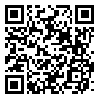BibTeX | RIS | EndNote | Medlars | ProCite | Reference Manager | RefWorks
Send citation to:
URL: http://jdc.tums.ac.ir/article-1-32-en.html

 , Marzieh Akbarzadeh *
, Marzieh Akbarzadeh * 
 1, Mohammad Hossein Dabagh Manesh
1, Mohammad Hossein Dabagh Manesh 
 , Hamidreza Tabatabaei
, Hamidreza Tabatabaei 
 , Zahra Zareh
, Zahra Zareh 

Background and Aim: Adolescents with polycystic ovary syndrome concern about weight gain, menstrual irregularities, acne and hirsutism. The aim of this study was to determine the frequency of facial and trunkal lesions of acne in 14- to 18-year-old high school students with polycystic ovary syndrome in Shiraz in 2009.
Methods: In this cross-sectional study, 3189 14- to 18-year-old female students were enrolled. Using questionnaires, data on personal information, clinical features and laboratory findings of hyperandrogenism and results of ultrasound examination were collected. Severity of acne was classified as mild, moderate and severe, based on the type and number of the lesions. Chi-squared and independent t tests were used for comparing proportions and means, respectively.
Results: The prevalence of severe acne was 5%. Mean total testosterone in individuals with severe acne was higher in comparison with those without acne. Severity of facial and trunkal acne were associated with polycystic ovaries (P<0.05). Mean level of luteinizing hormone (LH) was higher in those without acne than in those with severe acne (P >0.05).
Conclusion: Associations between severity of facial and trunkal acne lesions and polycystic ovaries were observed. Considering the undesirbale effects of acne on quality of life, hormonal screening and ultrasound examination in girls with moderate acne is recommended.
Received: 2011/03/7 | Accepted: 2011/05/22 | Published: 2013/07/17
| Rights and permissions | |
 |
This work is licensed under a Creative Commons Attribution-NonCommercial 4.0 International License. |



